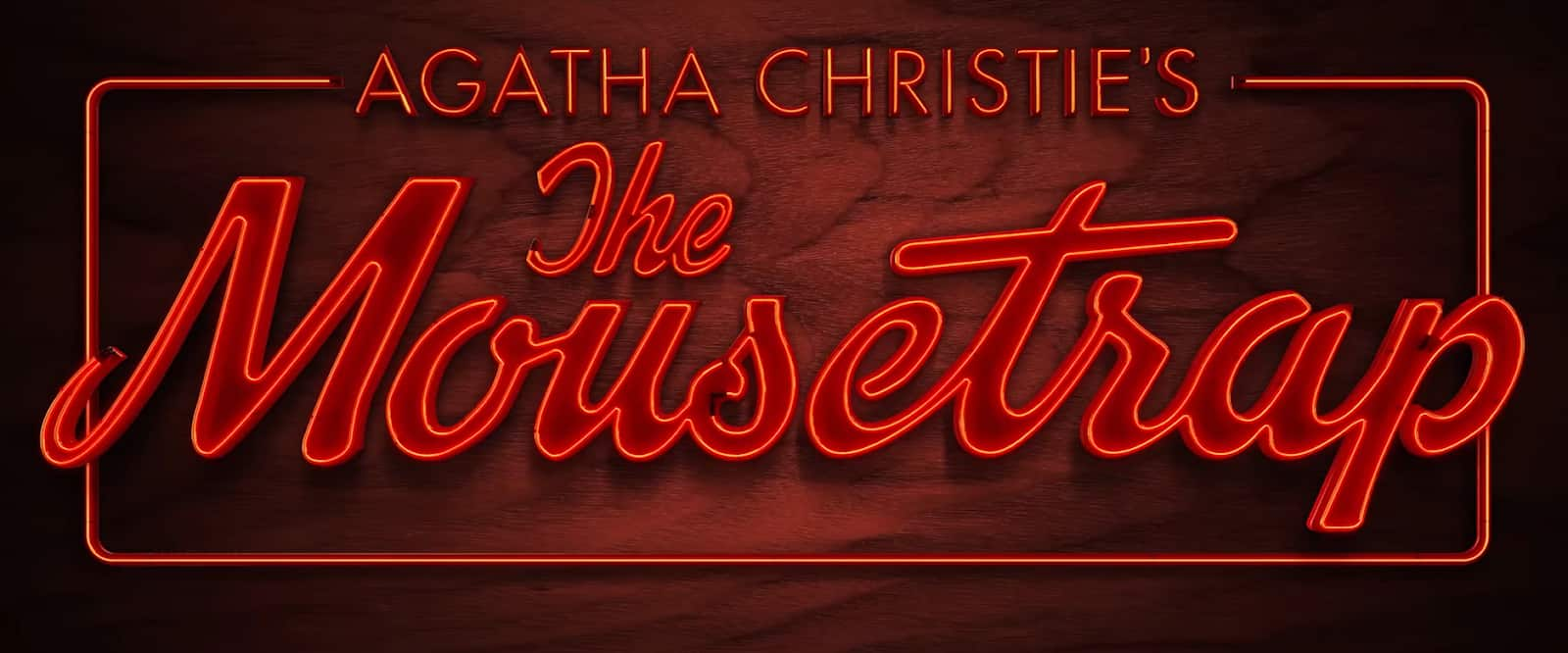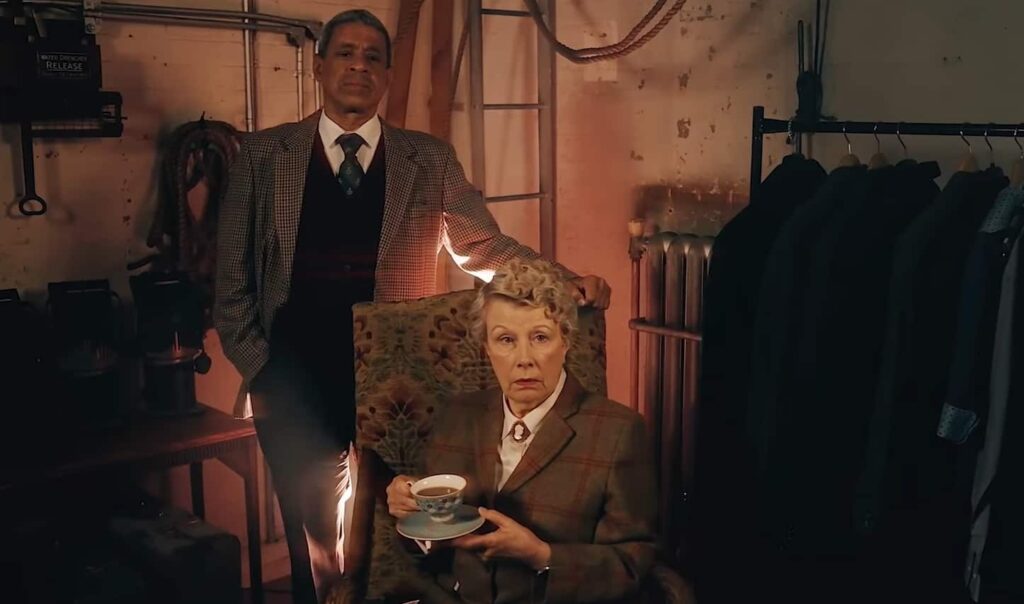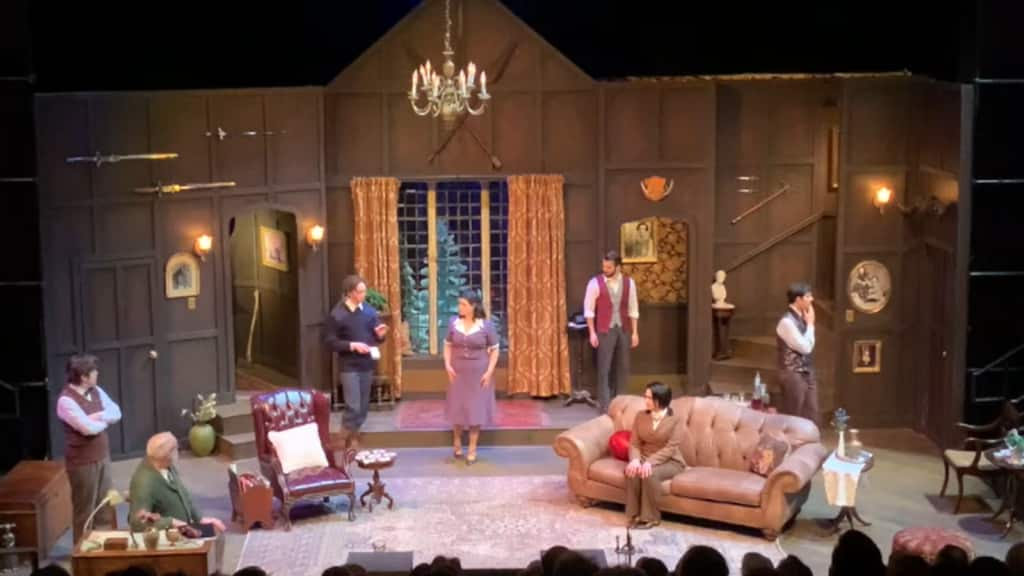
‘The Mousetrap’: The Iconic, Longest-Running Play
As Australian theaters step out of the shadows of prolonged lockdowns and cautiously reawaken to the world of live performances, there is an unmistakable and heartwarming resurgence of enthusiasm for the timeless treasures of the stage. In an era marked by unexpected twists and turns, audiences appear to be eagerly seeking solace in the welcoming embrace of the familiar and beloved classics. John Frost, a seasoned producer with an astute understanding of this prevailing sentiment, is currently putting his hypothesis to the test by bringing Agatha Christie’s iconic mystery, The Mousetrap, back to the limelight. This enduring production exudes an irresistible nostalgia, reminiscent of the comforting sensation one gets from savoring a pack of malted milk biscuits while watching the drama unfold on the theater stage. It’s as if, in the midst of all the uncertainty, The Mousetrap offers a reassuring anchor to a bygone era of entertainment, where mystery, suspense, and a touch of familiarity combine to create a captivating and comforting experience for theatergoers. You may also like reading about the ‘Dirty Dancing’ musical review for a delightful exploration of two distinct forms of theatrical entertainment.
Historical Significance of The Mousetrap

- “The Mousetrap,” a play that debuted in 1952 at the Ambassadors Theatre in London, has become a historical and cultural landmark in the realm of theatre;
- Its significance extends beyond its initial introduction; it was poised to mark an impressive 70-year run in London’s West End in 2022, a feat interrupted only by the unprecedented global health crisis. This mystery play, evolving over seven decades, has transformed into more than just a theatrical performance. It stands as a must-see attraction for tourists, achieving a status comparable to that of iconic landmarks such as Buckingham Palace and Madame Tussauds. This transformation signifies not just the play’s enduring appeal but also its integration into the cultural fabric of London, attracting diverse audiences from around the globe;
- In the early 1980s, however, “The Mousetrap” seemed to mirror the declining status of Britain and its theatre scene. Once a vibrant representation of British culture, it began to be perceived as a somewhat antiquated tourist attraction, offering respite from inclement weather rather than a compelling theatrical experience. The play’s ubiquitous presence on amateur stages throughout the English-speaking world further entrenched this notion, as it became a common choice for local performances, possibly diluting its uniqueness and charm.
Despite these perceptions, “The Mousetrap” experienced a resurgence in popularity. Audiences began to appreciate the play’s refined elegance and nuanced storytelling with fresh enthusiasm. Remarkably, this renewed interest emerged without any changes to the original script. Modern audiences have uncovered deeper layers within the play, appreciating it as a reflection of Britain’s evolving societal norms. The play subtly addresses themes such as the fading class system, offers compassionate portrayals of queer characters, and serves as a critique of authority figures. This shift in audience perception underscores the play’s adaptability and relevance, as it continues to resonate with contemporary themes and societal changes. “The Mousetrap,” thus, stands not only as a testament to the longevity of great storytelling but also as a mirror reflecting the dynamic nature of societal values and perceptions over time.
Digging Deeper into The Mousetrap’s Plot and Characters
“The Mousetrap,” a captivating mystery play, unfolds within the grand drawing room of Monkswell Manor, which epitomizes the aesthetic and cultural ambiance of the early 1950s. Set against the backdrop of a snow-clad Berkshire landscape in the winter of 1952, the manor, once a private residence, has been transformed into a guest house. This transformation is overseen by the Ralstons, an ambitious and energetic young couple. They are hosting their first event, marking a significant turning point in their lives and the history of Monkswell Manor.
The narrative of “The Mousetrap” is enriched by a diverse array of characters, each adding depth and complexity to the story. The guests include Mrs. Boyle, characterized by her irritable demeanor; Christopher Wren, an eccentric architecture trainee with a flair for the dramatic; the dignified and retired Major Metcalf; and the mysterious Ms. Casewell, whose allure is accentuated by her extensive travels and prolonged absence from home. The plot thickens with the arrival of two unexpected characters, whose presence introduces new dimensions and complications to the already intricate narrative, propelling the story towards an intense and gripping climax.
Under the skilled direction of Robyn Nevin, this particular production of “The Mousetrap” stands out for its brisk and efficient storytelling. While still in the nascent stages of preparation for a national tour, the production displays a remarkable level of professionalism and ease. The staging is characterized by a confident, relaxed air, showcasing exceptional pacing, precise timing, and well-crafted character portrayals. This level of performance quality not only speaks to the director’s experience and vision but also to the timeless appeal of the play, which continues to captivate audiences with its classic yet dynamic narrative and character interactions.
Audience Reaction & Aftermath

“The Mousetrap” has consistently captivated its audiences through its intricate plot and compelling performances. The play’s ability to maintain a high level of suspense and surprise is a testament to its masterful storytelling and the skill of its performers. This enduring power keeps the audience thoroughly engaged, offering a theatrical experience that is both immersive and thrilling. The strength of “The Mousetrap” lies in its capacity to continuously capture the audience’s imagination, drawing them into a world of mystery and intrigue that is as engaging now as it was at its premiere.
The Mousetrap: A Symbol of Unchanging Theatre
In the context of the ever-evolving theatre landscape, “The Mousetrap” stands as a remarkable symbol of continuity and tradition. Despite the passage of time, it has remained a constant fixture in the world of theatre, attracting audiences with its unchanging charm. However, this timeless appeal comes with a significant cost. The ticket prices for “The Mousetrap” are a stark reminder of its status as a premium theatrical experience, reflecting its position as one of the most expensive productions in the history of London’s theatre. The pricing not only indicates the play’s high demand but also its cultural and historical value in the realm of performing arts.
Remarkably, “The Mousetrap” has surpassed 25,000 performances, a milestone that speaks volumes about its enduring popularity and the precision of its execution. Each performance seems to channel the vision of Agatha Christie, the Queen of Mystery, with an accuracy and intensity that keeps the suspense alive and palpable. The play’s consistent ability to keep audiences on the edge of their seats until the very end is a fitting homage to Christie’s legacy. It highlights “The Mousetrap” not just as a piece of theatre, but as a cultural phenomenon that continues to resonate with audiences, preserving the essence of classic mystery storytelling in a modern era.
Conclusion
The Mousetrap is more than just a play—it’s a living testament to the enduring power of storytelling. Even though the narrative has turned into a cliché over the years, the play’s ability to evoke suspense and excitement is undeniable. The Mousetrap’s success is demonstrative of the collective nostalgia for narratives that span generations, capturing the essence of experiences and emotions in a way few contemporary plays manage to achieve. The Mousetrap, despite or perhaps because of its age, is a lasting monument to the power of the stage, the art of the narrative, and the intrigue of mystery.
The Mousetrap is not just a play—it’s a rich tapestry of British theatre history that continues to captivate audiences with its mystery and intrigue. Despite shifting times and its vintage charm, the compelling narrative and robust performances breathe new life into the show. The Mousetrap stands as a testament to the timeless artistry of Agatha Christie, a celebration of its enduring appeal and relevance, and a beacon of resilience in an ever-evolving theatre landscape. This review delves deep into the heart of The Mousetrap’s success, historical significance, and ongoing journey, exploring its rich characters, ingenious plot twists, and captivating theatrical experience.